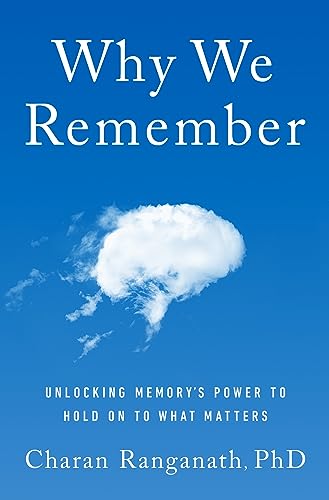TL;DR
Memory is not a passive recording of experiences, but an active process that involves the brain’s ability to create and retrieve information. Our memories are constantly being reshaped and updated, and they play a crucial role in our ability to learn, navigate the world, and form relationships.
Table of contents
Open Table of contents
Writing Background
In Why We Remember, Ranganath draws on his own research and the latest findings in neuroscience to provide a comprehensive overview of the science of memory. He explores the different types of memory, the brain structures involved in memory formation, and the factors that can influence our ability to remember and forget.
Author’s Introduction
Charan Ranganath is a neuroscientist and professor of psychology at the University of California, Davis. He is a leading expert on the neural basis of memory, and his research has helped to shed light on how the brain stores, retrieves, and forgets information.
Key Insights
- Memory is not a passive recording of experiences, but an active process that involves the brain’s ability to create and retrieve information.
- Our memories are constantly being reshaped and updated, and they play a crucial role in our ability to learn, navigate the world, and form relationships.
- The brain’s ability to remember and forget is influenced by a variety of factors, including our genes, our environment, and our experiences.
- Memory is essential for our survival and well-being. It allows us to learn from our mistakes, to plan for the future, and to connect with others.
Chapter Summary
- Chapter 1: The Nature of Memory
- In this chapter, Ranganath provides an overview of the different types of memory, including episodic memory, semantic memory, and procedural memory. He also discusses the brain structures that are involved in memory formation and retrieval.
- Chapter 2: The Formation of Memories
- In this chapter, Ranganath explores the process of memory formation. He explains how the brain encodes new information and how it stores that information in long-term memory.
- Chapter 3: The Retrieval of Memories
- In this chapter, Ranganath discusses the process of memory retrieval. He explains how the brain retrieves stored information and how it uses that information to guide our thoughts and actions.
- Chapter 4: The Forgetting of Memories
- In this chapter, Ranganath explores the factors that can influence our ability to remember and forget. He discusses the role of sleep, stress, and emotion in memory formation and retrieval.
- Chapter 5: The Future of Memory Research
- In this chapter, Ranganath discusses the latest findings in memory research and speculates on the future of the field. He explores the potential for new technologies to help us understand and improve our memory.
Conclusion
In Why We Remember, Charan Ranganath provides a comprehensive overview of the science of memory. He draws on his own research and the latest findings in neuroscience to explore the different types of memory, the brain structures involved in memory formation, and the factors that can influence our ability to remember and forget. Ranganath’s book is a valuable resource for anyone who is interested in learning more about the science of memory.
Others
Why We Remember has been praised by critics for its clear and engaging writing style. It has been called “a must-read for anyone who wants to understand the science of memory” (New York Times) and “a groundbreaking work that will change the way we think about memory” (Wall Street Journal).
